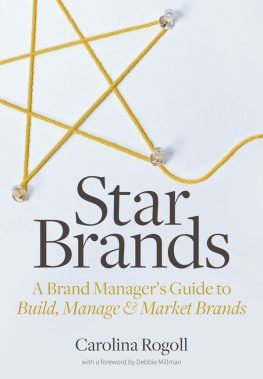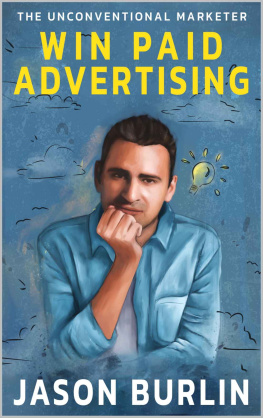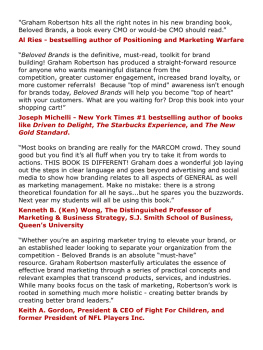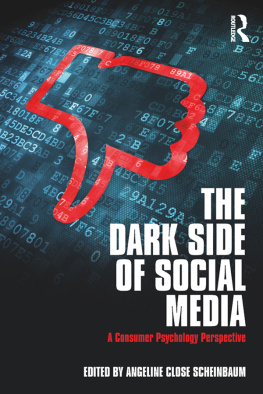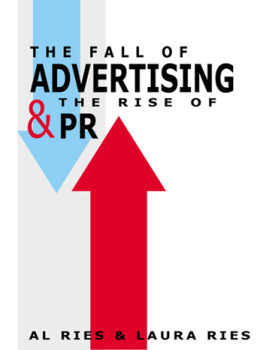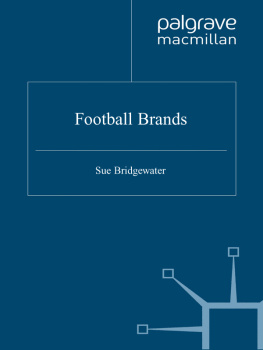



This is chaos
On an average day, we consume over 13 hours of media This media overload has made us insensitive to most advertising. We become overwhelmed with too many choices and end up not being able to choose anything.
What feels so exciting in the moment but so deceptive a second later? What, if anything, will we remember about all these brands by the time we wake up tomorrow morning? What are we looking for in life exactly? In sum, what is really meaningful to us? With all our screens, apps and social media platforms, we are on a quest to find a simple, but essential thing: meaning. Brand Hacks will unveil and decode our quests for meaning to help all of us make sense of our world, and enable marketers to create, grow and maintain their brands for the long run.
We dont care about [most] brands
Lets be clear from the get-go: we all search for meaning, not brands. That is, we interact with others, buy products and experience things to resolve this tension between who we are and who we want to be or how we want to be seen. Brands that succeed are the ones that act as shortcuts to resolve these tensions and help us find meaning. In this process, brands became meaningful themselves.
Brands that dont help us resolve these tensions fall by the wayside. Because we forget these brands easily, they have to constantly remind us of what they sell. In advertising, we call this increasing frequency of exposure. By reminding us often, these brands hope that well remember them next time we go to the store. Eventually, this leads us to look at their products as commodities. That is, we will buy them for their functional benefits but will switch to any competitor as soon as we find a cheaper or better alternative.
Our disbelief in brands is also a generational issue. Baby boomers are a more brand-loyal group who grew up with fewer choices, fewer advertising channels, and TV as their only real media screen. In contrast, more than half of millennials dont care for brands at all. A 2018 study from Cadent Consulting Group shows that 51 percent of millennials have no real preference between private-label and national brands. This only propels the growth of private-label brands from Trader Joes, Aldi, Amazon, and others, which now compete toe-to-toe with national brands.
Purchases are increasingly driven by benefits such as free delivery or lenient return policies, rather than the brand itself. Thats why store brands grow three times faster than branded products. In response, retailers have evolved their store-brand products to make them indistinguishable from those of the national players. Target, for example, has rolled out dozens of its own products and invested heavily in branding and design.
We project an idealized lifestyle
Life is hard and work is a grind. On an average day, we spend an awful lot of time on video calls, responding to hundreds of emails, and handling work-related tasks, often well after normal business hours. To compensate, we rely on social networking sites to craft an idealized lifestyle filled with leisure, unique experiences and glamorous pictures.
Facebook, Twitter, Instagram, YouTube, and other social media platforms allow us to broadcast these narratives and to tell the world that we are superior to others; we can afford ostentatious things, vacations, and parties and we seemingly have more leisure time than all of our hard-working friends. These positive narratives solicit positive feedback from our friends and followers, which provides us with a sense of well-being and enhances our self-esteem. To maintain this feeling, we keep posting more content on social media. This eventually lowers our self-control and leads us to more indulgent and impulsive behavior such as spending too much or even binge eating and drinking.
Conventional advertising is dying
Unlike previous generations, todays consumers can access a vast amount of content without having to see many, if any, traditional ads. Consumers ignore ads, skip them, or even block them by using ad blocking software to keep digital advertising out of their days. As of 2019, roughly 26 percent of internet users relied on ad blocking software to avoid being disrupted by digital advertising. Ad blocking is not a fad: the use of ad blocking software keeps rising, and impacts all devices (desktop, laptop, mobile, and tablets) and publishers.
This is frightening news for the publishing industry. Newspaper and magazine circulation has been free falling, along with advertising revenue. Publishers have therefore relied on digital advertisements to keep them afloat. However, about 26 percent of US readers use ad blockers, causing the US publishers to lose almost $35 billion in revenue in 2020 alone.
In response to this phenomenon, some publishers like Facebook are investing in technologies to block ad blockers. These programs render ad blockers useless, enabling publishers to serve ads even to people who have installed ad blocking software. This begins a game of cat-and-mouse between software developers blocking software that blocks ad blocking software, begging the question of who the real beneficiary is meant to be.
But writing lines of code is merely a tactical move to force-feed more disrupting ads to an audience that is already burned out. The real fix for advertisers lays in connecting with people on an emotional level and supporting their quest for meaning. Brand Hacks will show you how to create meaningful brands, ads, and content that consumers seek, not skip.
Why most advertising campaigns fail
Half the money I spend on advertising is wasted; the trouble is I dont know which half.
JOHN WANAMAKER (18381922), American merchant
Despite all the technology and advanced analytics, not much has changed since Wanamaker made this statement over 100 years ago. Here is why most marketing efforts fail:
Most marketing and advertising executives live in a bubble, disconnected from the real-world consumers they target.
Marketers often live in big cities like New York and San Francisco, where they earn more money, and consume more media than middle-America. A study commissioned by ThinkBox shows that marketers overestimate the time people spend watching video on various devices by a factor of 18. They also overestimate time spent on Video-on-Demand (VoD) devices by 10 times. These same marketers spend three times more time on social media or VoD devices than ordinary people. We, marketing and advertising professionals, are at the forefront of technological innovation. We cram as much media as possible into our days, spending more time than most online. And we tend to think everyone else does the same.
Paul Jankowski of the New Heartland Group, a Nashville, Tennessee-based branding agency, has asked marketing executives to share their takes on middle-America. In these candid conversations, he heard lines like hillbillies, Bible beaters, right-wing extremists, modernized rednecks who are stuck in the past, wearing their ignorance and intolerance proudly. His agency facilitates cultural immersion tours where an advertiser and their agency visit Tennessee for two or three days to help them understand middle-America. During these tours, Jankowski introduces marketers to locals that dont necessarily work in the advertising industry. The group also stops by local breweries and Bass Pro Shops to experience Nashvilles version of the Heartland.
Next page

